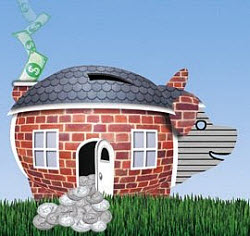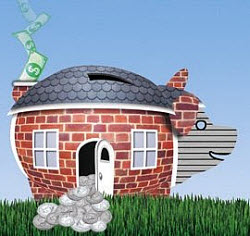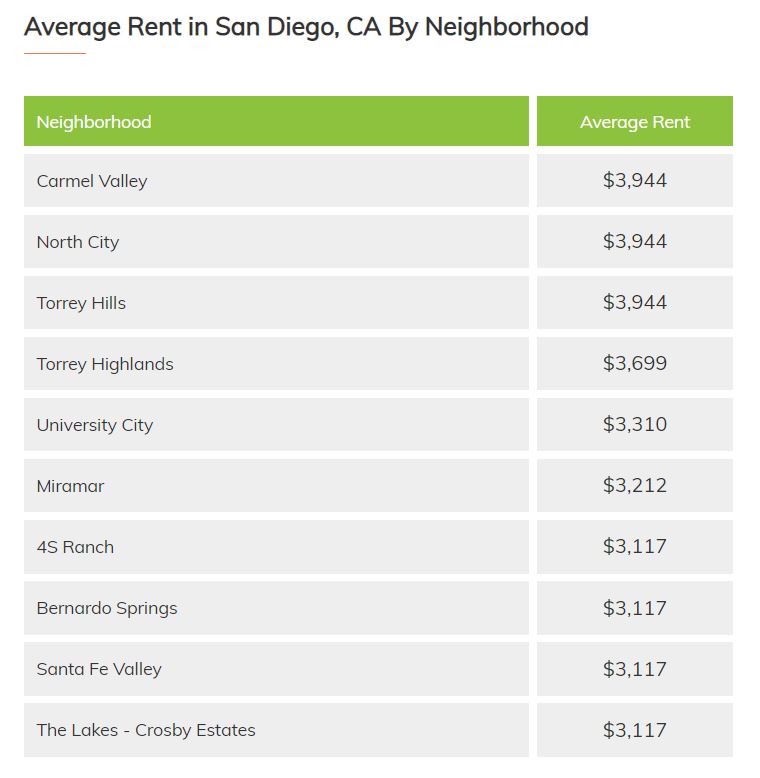
Selling your home can be a time-consuming and stressful endeavor, especially if you wish to do so quickly. However, with the right approach, you can streamline the process and sell your home quickly. In this article, we will discuss some tips and tricks that will assist you in selling your home quickly.
Correctly pricing your home is one of the most crucial things you can do. This means conducting research to determine the selling prices of comparable homes in your area and then setting you asking price accordingly. Overpricing your home can reduce its appeal to potential buyers while underpricing it could mean leaving money on the table.
A second important factor in selling your home quickly is ensuring that it is in pristine condition. This includes cleaning and decluttering the space, making any necessary repairs, and possibly performing cosmetic upgrades to make the property more appealing to prospective buyers. You want to make an excellent first impression and design a space where people can envision themselves living.
Effective marketing of your home is also essential. This entails creating a listing with numerous photos, videos, and a thorough property description. It's also a good idea to hire a real estate agent who can help you reach more prospective buyers and negotiate the best deal. Also, be prepared to be adaptable and willing to make concessions. For instance, you may need to be willing to negotiate the asking price or close the deal quickly. The quicker you can sell your home, the more you're willing to cooperate with prospective buyers.
How to Sell Your Home Fast as an Investor?
If you’re a real estate investor, you know how important it is to be able to sell a house fast. Anything can happen in a short period of time, and you don’t want to risk losing value in your property just because it takes a long time to find a buyer to meet your asking price. When you’re flipping a house, you need to make sure that you do the proper renovations to increase the value of your property, but timing is of the essence because you need to be selling homes just as fast as you’re buying them. There are always a variety of changes you can consider to make your house more marketable.
Never doubt the importance of a professional real estate agent. Finding a good agent is hard these days as the housing market is always changing. We know what it’s like for homeowners and real estate investors, and that’s why we provide only the best advice when it comes to helping you sell quickly. We want you to be able to turn a house into cash. Our experts have knowledge in selling different kinds of housing and properties, working in a variety of different locations, and understanding the target buyers.
In order for your investments to work for you, you need to make sure your real estate is leaving the right impression on buyers. This might include playing up features that appeal to certain buyers. For example, if your property is located near a school, you can assume that a lot of buyers will have families, so you might want to draw attention to the number of bedrooms in the house or the size of the yard.
It’s also about the optics. Who wouldn’t want a newer house with more space? Whether you’re flipping a house or just buying low and selling high, a fresh coat of paint and some prop furniture can really go the extra mile. Maybe you’re just joining the real estate game, or maybe you’ve been investing in real estate for thirty years. Whatever the case may be, these tips can help you get ahead and sell your house in no time!
Tips on How to Sell Your Home Fast:
Selling your home can be a stressful process, but by setting the right price, making it look great, and utilizing technology, you can increase your chances of selling it quickly. It's also important to be flexible with negotiations and open to compromises to make the process smoother and faster.
- Price it right: As mentioned earlier, setting the right price for your home is crucial to selling it fast.
- Make it look great: Clean, declutter, and make necessary repairs. Consider giving your home a fresh coat of paint or updating fixtures.
- Stage it: Staging can help potential buyers visualize living in your home, making it easier for them to make a decision.
- Be flexible: Be open to negotiations and willing to make compromises to get the deal done faster.
- Utilize technology: Utilize online listing platforms, virtual tours, and high-quality photos and videos to showcase your home to a wider audience.
How to Get Your Home Ready to Sell Fast:
Preparing your home for the market can make a significant impact on the speed of the sale. Cleaning, decluttering, making repairs, improving curb appeal, and hiring a professional inspector can all help make your home more appealing to potential buyers.
- Clean thoroughly: Clean every nook and cranny of your home, including windows, appliances, and carpets.
- Declutter: Remove any personal items, excess furniture, and clutter to create a more spacious and appealing look.
- Make repairs: Fix any leaks, cracks, or damages in your home. Consider making small upgrades that can make a big impact, such as updating light fixtures.
- Improve curb appeal: Make sure your home's exterior looks great by mowing the lawn, planting flowers, and pressure-washing the exterior.
- Hire a professional inspector: Having a professional inspector check your home can help identify any issues that need to be addressed before listing.
How to Sell Your Home Fast and for Top Dollar:
Selling your home for top dollar requires proper research, effective marketing, and highlighting unique features. Hosting open houses, working with a real estate agent, and pricing it competitively can also increase the chances of selling your home quickly and for a higher price.
- Research comparable home prices: Knowing what other homes in your area are selling can help you price your home competitively.
- Market your home effectively: Utilize online listing platforms, professional photography, and virtual tours to showcase your home to potential buyers.
- Highlight unique features: Make sure to highlight any unique features or upgrades in your home to make it stand out from others.
- Host open houses: Hosting open houses can generate buzz and interest in your home, helping you get top dollar.
- Hire a real estate agent: A real estate agent can help you navigate the process, reach more potential buyers, and negotiate the best deal.
How to Sell Your Home Fast by Owner:
Selling your home by owner can be a cost-effective option, but it requires effective marketing and being prepared for negotiations. Pricing it correctly, networking, and considering an auction can also help increase the chances of selling your home fast.
- Price it correctly: Set a fair and competitive price for your home.
- Market your home effectively: Utilize online listings, professional photos and videos, and social media to showcase your home.
- Network: Reach out to friends, family, and acquaintances who may know someone in the market for a home.
- Consider an auction: An auction can generate interest and competition for your home, leading to a quick sale.
- Be prepared for negotiations: Be prepared to negotiate the price and closing date with potential buyers.
How to Sell Your Mobile Home Fast:
Selling a mobile home can present its own set of challenges, but by cleaning, decluttering, making repairs, pricing it correctly, and offering incentives, you can increase the chances of selling it fast. Marketing your home effectively through online listings and professional photos and videos is also crucial.
- Clean and declutter: Make sure your home looks its best by cleaning and decluttering.
- Make repairs: Address any leaks, cracks, or damages in your home to make it more appealing to potential buyers.
- Price it right: Research comparable mobile home prices in your area and set a competitive price.
- Market your home effectively: Utilize online listings, professional photos and videos, and social media to showcase your home.
- Consider offering incentives: Offering incentives such as paying for closing costs or offering a home warranty can make your home more appealing to potential buyers.
How to Make Your Home More Valuable and Sell Faster:
Making upgrades, adding storage, increasing energy efficiency, landscaping your yard, neutralizing your décor, and hiring a professional appraiser are all ways to increase the value of your home and make it more appealing to potential buyers. By taking these steps, you can sell your home fast and for a higher price.
- Make upgrades: Consider making upgrades such as updating the kitchen, and bathroom, or adding a new deck or patio to increase the value of your home.
- Add storage: Adding extra storage, such as closet organizers or shelving units, can make your home more attractive to potential buyers.
- Increase energy efficiency: Making your home more energy efficient by installing new windows or adding insulation can lower utility costs and make it more appealing to environmentally conscious buyers.
- Landscape your yard: Landscaping your yard can improve your home's curb appeal and increase its value.
- Neutralize your décor: Neutralizing your décor by painting walls and replacing bold accents with neutral colors can make your home more appealing to a wider range of potential buyers.
- Hire a professional appraiser: A professional appraiser can provide an accurate assessment of your home's value, allowing you to price it competitively and sell it fast.
By following these tips, you can increase the value of your home and sell it fast. Whether you're working with a real estate agent or selling by owner, it's important to be proactive and take the necessary steps to make your home as appealing as possible to potential buyers.


 A reverse mortgage (or home equity conversion, as it is sometimes called) involves selling the equity in a home while retaining the right to live in that home until death (a life estate). It turns a home's equity into regular cash payments.
A reverse mortgage (or home equity conversion, as it is sometimes called) involves selling the equity in a home while retaining the right to live in that home until death (a life estate). It turns a home's equity into regular cash payments.
 You do not need a degree in economics to become market-literate, just an understanding of how local real estate economies work, fluency with the terminology, and good sources for local data on sales, prices, values, and inventories. Add your professional expertise and your skilled observations of the latest trends in the charts and numbers and you have a winning formula.
You do not need a degree in economics to become market-literate, just an understanding of how local real estate economies work, fluency with the terminology, and good sources for local data on sales, prices, values, and inventories. Add your professional expertise and your skilled observations of the latest trends in the charts and numbers and you have a winning formula.
 You don't have to tell us, finding a good property management company is hard. When we first started investing in residential real estate we went through several property managers, struggling to find one that was truly exceptional.
You don't have to tell us, finding a good property management company is hard. When we first started investing in residential real estate we went through several property managers, struggling to find one that was truly exceptional. No landlord would pay more than necessary for utilities or other operating expenses for a rental property. Yet millions of landlords pay more taxes on their rental income than they have to. Why? Rental real estate provides more tax benefits than almost any other investment. The cost of operating and maintaining a rental property, such as repairs, insurance, and property management fees, are tax-deductible.
No landlord would pay more than necessary for utilities or other operating expenses for a rental property. Yet millions of landlords pay more taxes on their rental income than they have to. Why? Rental real estate provides more tax benefits than almost any other investment. The cost of operating and maintaining a rental property, such as repairs, insurance, and property management fees, are tax-deductible.

 The
The 

 As a general rule, 5 to 6 months of inventory is considered to be a normal or balanced market. Over 6 months of inventory and we have a buyer’s market. If it is less than 5 months and we have a seller’s market. The smaller the available inventory, the tighter the market is. Keep in mind that these are simply guidelines and will differ from market to market.
As a general rule, 5 to 6 months of inventory is considered to be a normal or balanced market. Over 6 months of inventory and we have a buyer’s market. If it is less than 5 months and we have a seller’s market. The smaller the available inventory, the tighter the market is. Keep in mind that these are simply guidelines and will differ from market to market.
